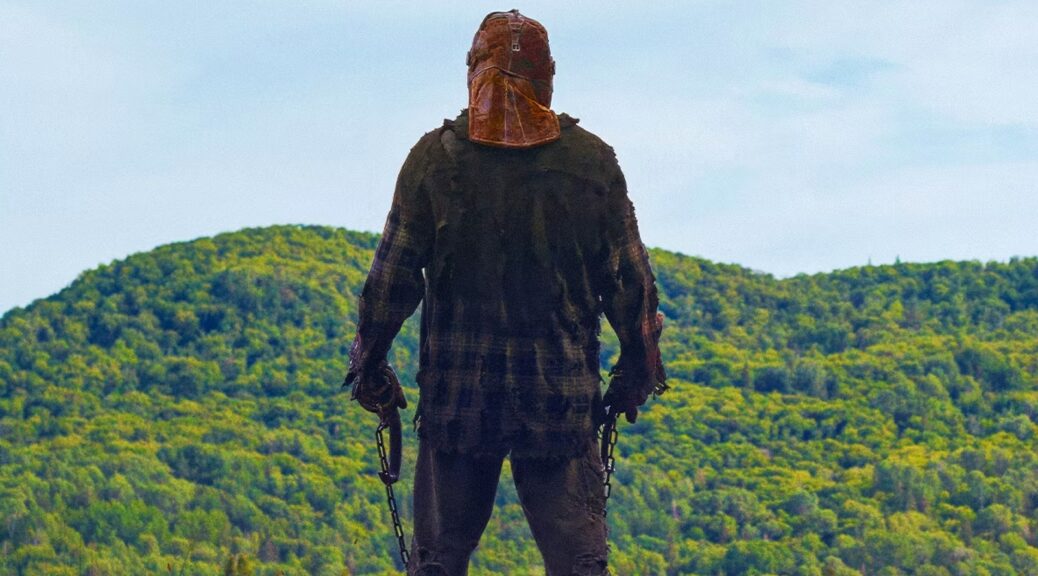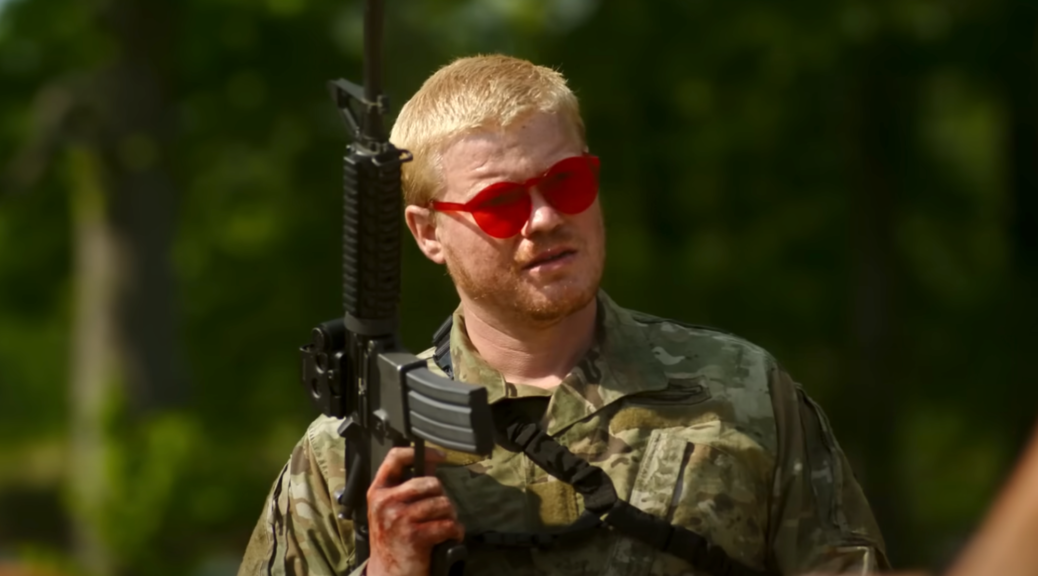We say this most years, but 2024’s horror output kicked all manner of ass. It was tough to narrow our list down to ten, so we want to give some quick love to the honorable mentions.
25. Immaculate
24. Speak No Evil
23. Woman of the Hour
22. Sleep
21. The Devil’s Bath
10. In a Violent Nature
19. Milk & Serial
18. The Vourdalak
17. Handling the Undead
16. Stopmotion
15. Cuckoo
14. Alien: Romulus
13. Late Night with the Devil
12. Smile 2
11. Infested
And now, our ranking of the ten best horror films of 2024.
10. Red Rooms
True crime culture. Serial killer groupies. The Dark Web. Does all of it seem too grim, too of-the-moment, too cliché to make for a deeply affecting thriller these days? Au contraire, mon frère. Québécois Pascal Plante makes nimble use of these elements to craft a nailbiter of a serial killer thriller with his latest effort, Red Rooms.
Plante expertly braids vulnerability and psychopathy, flesh and glass, humanity and the cyber universe for a weirdly compelling peek at how easily one could slide from one world to the other.
His real magic trick—one that remarkably few filmmakers have pulled off—is generating edge-of-your-seat anxiety primarily with keyboard clicks, computer screens and wait times. But the tension Plante builds—thanks to Juliette Gariépy’s precise acting—is excruciating. They keep you disoriented, fascinated, a little repulsed and utterly breathless.
9. Oddity
Carolyn Bracken is Darcy, twin sister of the recently slain Dani (also Bracken). Darcy is a little touched—she still runs the curiosity/antique shop her mother left her and still holds on to the giant wooden man a witch gave her parents for their wedding. Darcy is also blind, so when she arrives at her brother-in-law’s home—the very spot where Dani came to her bloody end—Ted (Gwilym Lee) and his new live-in girlfriend (Caroline Menton) don’t know how to politely ask her to leave. And to take her giant wooden friend with her.
Writer/director Damian McCarthy hands this tapestry of folklore and soap opera to a nimble cast and a gifted cinematographer. Together this team casts a spell too fun to break.
8. Longlegs
Maika Monroe is Agent Lee Harker whose “hyper intuitive” nature has her assigned to a confounding case of whole families murdering one another, the only sign of an outside presence being an encoded note left at the scenes. Monroe’s green FBI agent is as stiff and awkwardly internal as Nic Cage’s psycho is theatrical. Her terror is as authentic as his lunacy.
Filmmaker Oz Perkins shines as bright as ever, too. As always, his shot selection and framing evoke dark poetry. His use of light and shadow, architecture and space is like no one else’s. Longlegs is strangely beautiful, deeply unnerving, and a fine reason to be a horror fan.
7. I Saw the TV Glow
Fulfilling the promise of 2021’s We’re All Going to the World’s Fair, writer/director Jane Schoenbrun’s follow-up, I Saw the TV Glow, is a hypnotically abstract and dreamily immersive nightmare of longing.
Justice Smith (Dungeons & Dragons: Honor Among Thieves) is heartbreakingly endearing, while Bridgette Lundy-Paine (Bill & Ted Face the Music) provides a revelatory turn of alienation and mystery. It’s hard to take your eyes of either one of them, with Schoenbrun often framing their stares through close-ups that become as challenging as they are inviting. And that feels organically right. Because Schoenbrun is channelling characters who imagine life as someone else, to again emerge as a challenging and inviting filmmaker with a thrillingly original voice.
6. Heretic
There is something undeniably fun about Hugh Grant’s villain phase. Filmmakers Scott Beck and Bryan Woods craft a villain for the veteran actor that might just wipe those 90s rom-coms from our collective memory. Grant is Mr. Reed, and he’s invited two young Mormon sisters (Sophie Thatcher and Chloe East, both very solid) into his home to help lead him to enlightenment.
Less terrifying is the trap that’s been laid, more frightening is the absolute authenticity of Grant’s wickedly funny performance. You know this guy—if not in person, then from online comments. He’s absolutely genius, and though the film writes itself into a bit of a corner, there’s no denying this performance.
5. Blink Twice
In her directorial debut, Zoë Kravitz—working from a script she co-wrote with E.T. Feigenbaum—delivers an intoxicating and haunting thriller about privilege.
What transpires feels influenced by the classic The Stepford Wives, as well as Julia Leigh’s Sleeping Beauty and Olivia Wilde’s Don’t Worry Darling. The ideas are less borrowed than repeatedly, historically true and Kravitz reconsiders these timeless notions with an unerringly contemporary sensibility and a mean spirit that’s earned. Still, it’s Channing Tatum who effortlessly bridges horror fantasy with “damn, this could really happen.” His morally blurry turn, charmingly evil, has such authenticity to it that the island horror feels more like a reflection of reality than it should.
4. Strange Darling
“Are you a serial killer?” A question usually asked in jest during a first date, but you still judge your date’s facial response as they answer. Was that a nervous laugh? Did that smile come too easy? We’ve all seen too many episodes of Dateline. Strange Darling kicks off with this question and that’s the top of the hill for the cat-and-mouse roller coaster thriller that follows.
The twists are fun, but Willa Fitzgerald (The Fall of the House of Usher) and Kyle Gallner’s (Smile, Dinner in America) performances are the best part of the movie.
3. The Coffee Table
A remarkably well written script fleshed out by a stunning ensemble becomes utter torture as you want so badly for some other outcome. Co-writer/director Caye Casas ties threads, builds anxiety, plunges the depths of “what’s the worst that could happen?” and leaves you shaken.
David Pareja and Estefania de los Santos craft indelible, believable, beautifully flawed characters so convincing that their experience becomes painful for you. Casas salts the wounds with dark comedy, but the tenderness and tragedy collaborate toward something far more crushingly human.
2. The Substance
There are some films that, for better or worse, you never truly forget. With each passing minute, Coralie Fargeat’s The Substance proved it would be one of those films. And that shrimp cocktail will never look as appealing again. Holy cow, this movie! What a glorious sledgehammer Fargeat wields!
Demi Moore -in her best performance in decades if not her career – plays Elisabeth, an actress and fitness guru turning 50. Fargeat takes this concept, pulls in inspiration from Cronenberg as well as Brian Yuzna’s Society, strangles subtlety with some legwarmers, and crafts an unforgettable cautionary tale about the way the male gaze corrupts and disfigures women inside and out.
1. Nosferatu
In collaboration with longtime cinematographer Jarin Blaschke and The Northman composer Robin Carolan, filmmaker Robert Eggers conjures an elegant, somber, moody Germany breathlessly awaiting death.
Eggers keeps the Count (Bill Skarsgård) shrouded in darkness long enough to build excitement. What the two deliver is unlike anything in the canon. It’s horrifying and perfectly in keeping with the blunt instrument they’ve made of this remorseless monster. His monstrousness makes the seductive nature of the tale all the more unseemly. This beast, the rats, the stench of contagion infesting the elegant image of Germany and her beautiful bride—it is the stuff of nightmares.
It makes you grateful that Eggers was not intrigued by Stoker’s elegant aristocrat and his tortured love story, but drawn instead to the repulsive carnality of Nosferatu.





